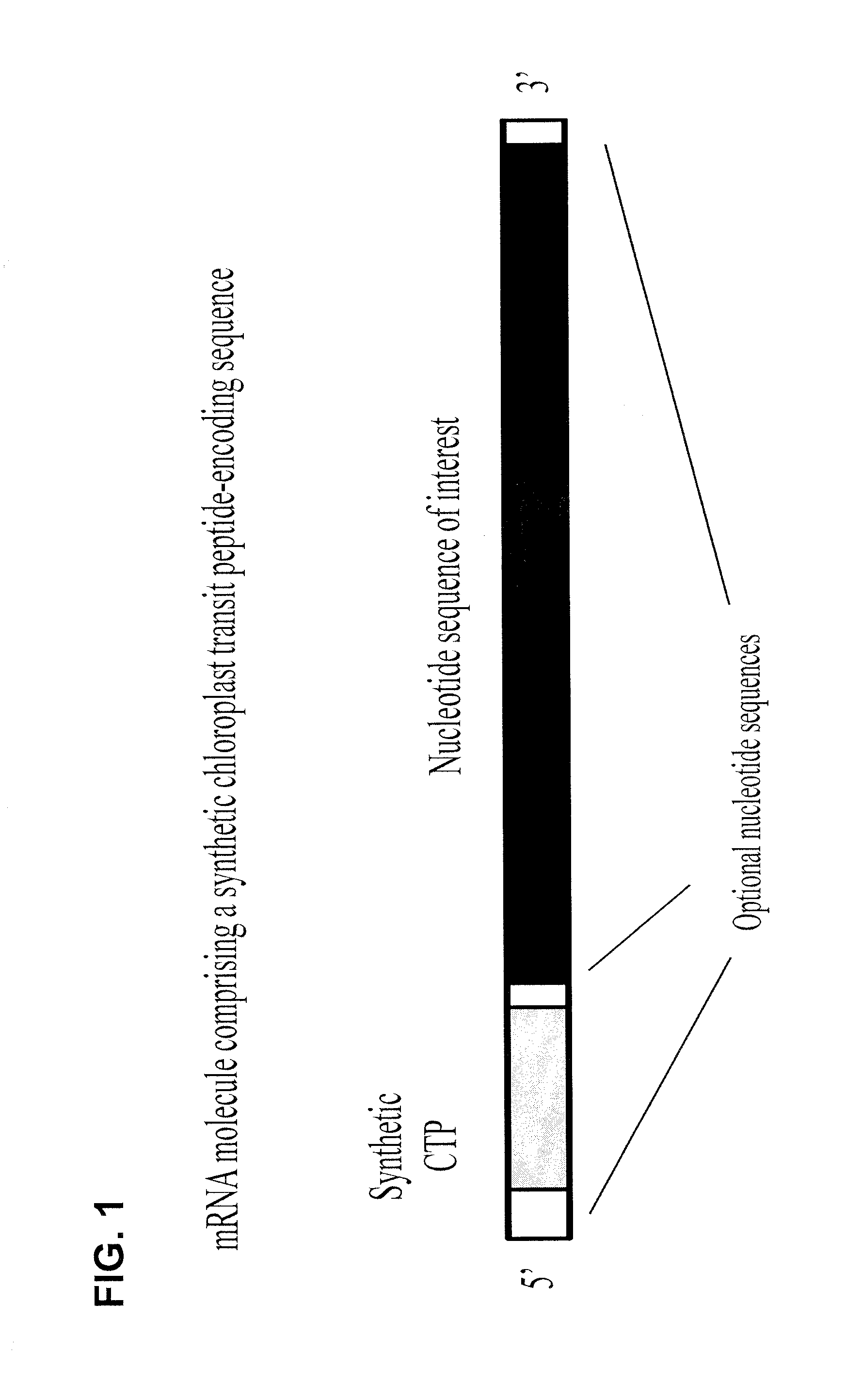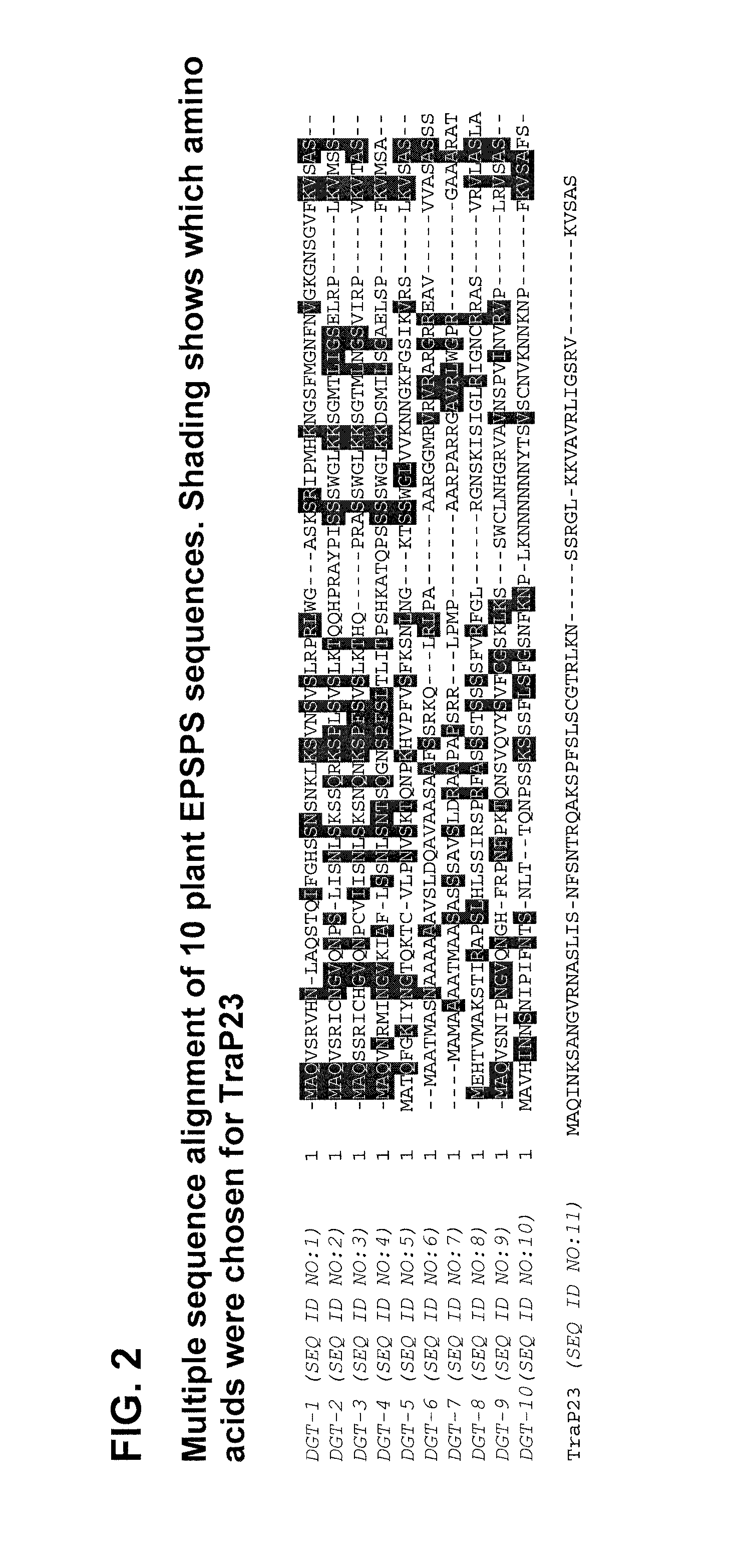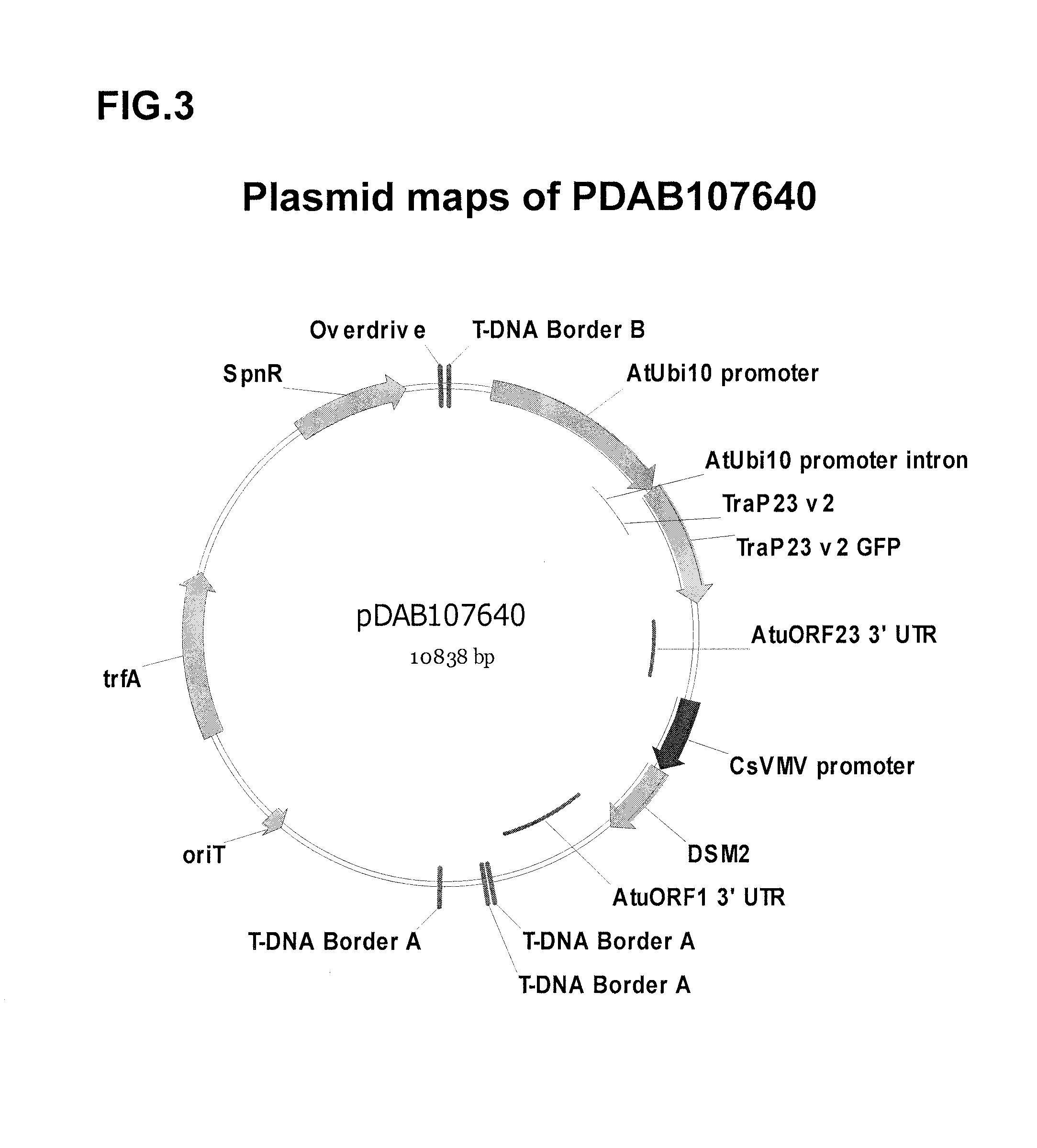Synthetic chloroplast transit peptides
a technology of chloroplasts and transit peptides, applied in the field of genetically encoding and expressing polypeptides, can solve the problems of not all of these sequences have been useful in heterologous expression, and the structural requirements of chloroplast targeting peptide information remain elusiv
- Summary
- Abstract
- Description
- Claims
- Application Information
AI Technical Summary
Benefits of technology
Problems solved by technology
Method used
Image
Examples
example 1
Design and Production of a Synthetic Chloroplast Transit Peptide (TraP) Sequence
[0123]Plastids are cytoplasmic organelles found in higher plant species and are present in all plant tissues. Chloroplasts are a specific type of plastid found in green photosynthetic tissues which are responsible for essential physiological functions. For example, one such primary physiological function is the synthesis of aromatic amino acids required by the plant. Nuclear encoded enzymes are required in this biosynthetic pathway and are transported from the cytoplasm to the interior of the chloroplast. These nuclear encoded enzymes usually possess an N-terminal transit peptide that interacts with the chloroplast membrane to facilitate transport of the peptide to the stroma of the chloroplast. Bruce B. (2000) Chloroplast transit peptides: structure, function, and evolution. Trends Cell Bio. 10:440-447. Upon import, stromal peptidases cleave the transit peptide, leaving the mature functional protein imp...
example 2
Transient in Planta Testing of Synthetic Chloroplast Transit Peptide (TraP) Sequences
Tobacco Transient Assay:
[0125]The Trap23 synthetic chloroplast transit peptide sequence were initially tested via a transient in planta assay. A polynucleotide sequence which encodes the Trap23v2 (SEQ ID NO:12) synthetic chloroplast transit peptide sequences was synthesized. The resulting construct contained two plant transcription units (PTU). The first PTU was comprised of the Arabidopsis thaliana Ubiquitin 10 promoter (AtUbi10 promoter; Callis, et al., (1990) J. Biol. Chem., 265: 12486-12493), TraP-green fluorescent protein fusion gene (TraP-GFP; U.S. Pat. No. 7,678,893), and Agrobacterium tumefaciens ORF 23 3′ untranslated region (AtuORF23 3′UTR; U.S. Pat. No. 5,428,147). The second PTU was comprised of the Cassava Vein Mosaic Virus promoter (CsVMV promoter; Verdaguer et al., (1996) Plant Molecular Biology, 31:1129-1139), dsm-2 (DSM2; U.S. Patent App. No. 2011 / 0107455), and Agrobacterium tumefac...
example 3
Synthetic Chloroplast Transit Peptide (TraP) Sequences for Expression of Agronomically Important Transgenes in Arabidopsis
[0135]A single amino acid mutation (G96A) in the Escherichia coli 5-enolpyruvylshikimate 3-phosphate synthase enzyme (EPSP synthase) can result in glyphosate insensitivity (Padgette et al., (1991); Eschenburg et al., (2002); Priestman et al., (2005); Haghani et al., (2008)). While this mutation confers tolerance to glyphosate, it is also known to adversely affect binding of EPSP synthase with its natural substrate, phosphoenolpyruvate (PEP). The resulting change in substrate binding efficiency can render a mutated enzyme unsuitable for providing in planta tolerance to glyphosate.
[0136]The NCBI Genbank database was screened in silico for EPSP synthase protein and polynucleotide sequences that naturally contain an alanine at an analogous position within the EPSP synthase enzyme as that of the G96A mutation which was introduced into the E. coli version of the enzym...
PUM
| Property | Measurement | Unit |
|---|---|---|
| temperature | aaaaa | aaaaa |
| pH | aaaaa | aaaaa |
| temperature | aaaaa | aaaaa |
Abstract
Description
Claims
Application Information
 Login to View More
Login to View More - R&D
- Intellectual Property
- Life Sciences
- Materials
- Tech Scout
- Unparalleled Data Quality
- Higher Quality Content
- 60% Fewer Hallucinations
Browse by: Latest US Patents, China's latest patents, Technical Efficacy Thesaurus, Application Domain, Technology Topic, Popular Technical Reports.
© 2025 PatSnap. All rights reserved.Legal|Privacy policy|Modern Slavery Act Transparency Statement|Sitemap|About US| Contact US: help@patsnap.com



